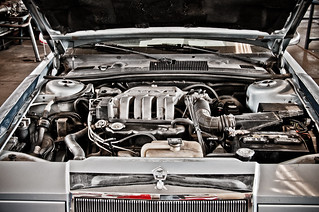
Sand Casting
As the name implies, sand casting uses a silica-based material, like sand, to create a molding surface. Sometimes manufacturers add clay to help the sand particles bond more closely. A mold made of sand is somewhat flexible, so there’s less cracking, tearing or other types of flaws as the liquefied material cools and hardens.
Advantages of sand casting:
- Lower production and post-tooling costs
- The ability to cast ferrous and non-ferrous materials
- The ability to create large components
Disadvantages of sand casting:
- Less accurate than other casting methods
- It’s harder to cast components with predetermined weight and size specifications
- Finished items tend to have a rougher surface finish
Investment Casting
Investment casting manufacturers use a wax pattern of a product to make a mold. They dip the wax pattern into a refractory slurry made of materials like plaster of Paris and silica or sillimanite and silica to form the mold. After dipping the wax into the slurry, manufacturers heat the pattern to melt and remove the wax, as well as harden the slurry binders. They then pour molten metal into the mold and allow it to cool.
Advantages of investment casting:
- Greater accuracy
- Create products with precise dimensions
- Create intricate, complex parts that have thin walls
- The ability to cast ferrous and non-ferrous materials
- High-quality, smooth finishes that require minimal machining
Disadvantages of investment casting:
- More expensive than sand casting
- Lead times may be longer
The investment casting process is often superior to other types of casting, particularly in regards to surface finishes. Sinotech, a U.S. company, has over 20 years of experience creating QS-9000- and ISO-certified investment castings in its factories across the Pacific Rim. Sinotech uses magnetic particle inspection, high-accuracy machining and CMM confirmation to ensure your castings are flawless and dimensionally correct.
Contact Sinotech today to learn more about its investment casting manufacturing services.
[Photo by Andrew Taylor courtesy of CC License]